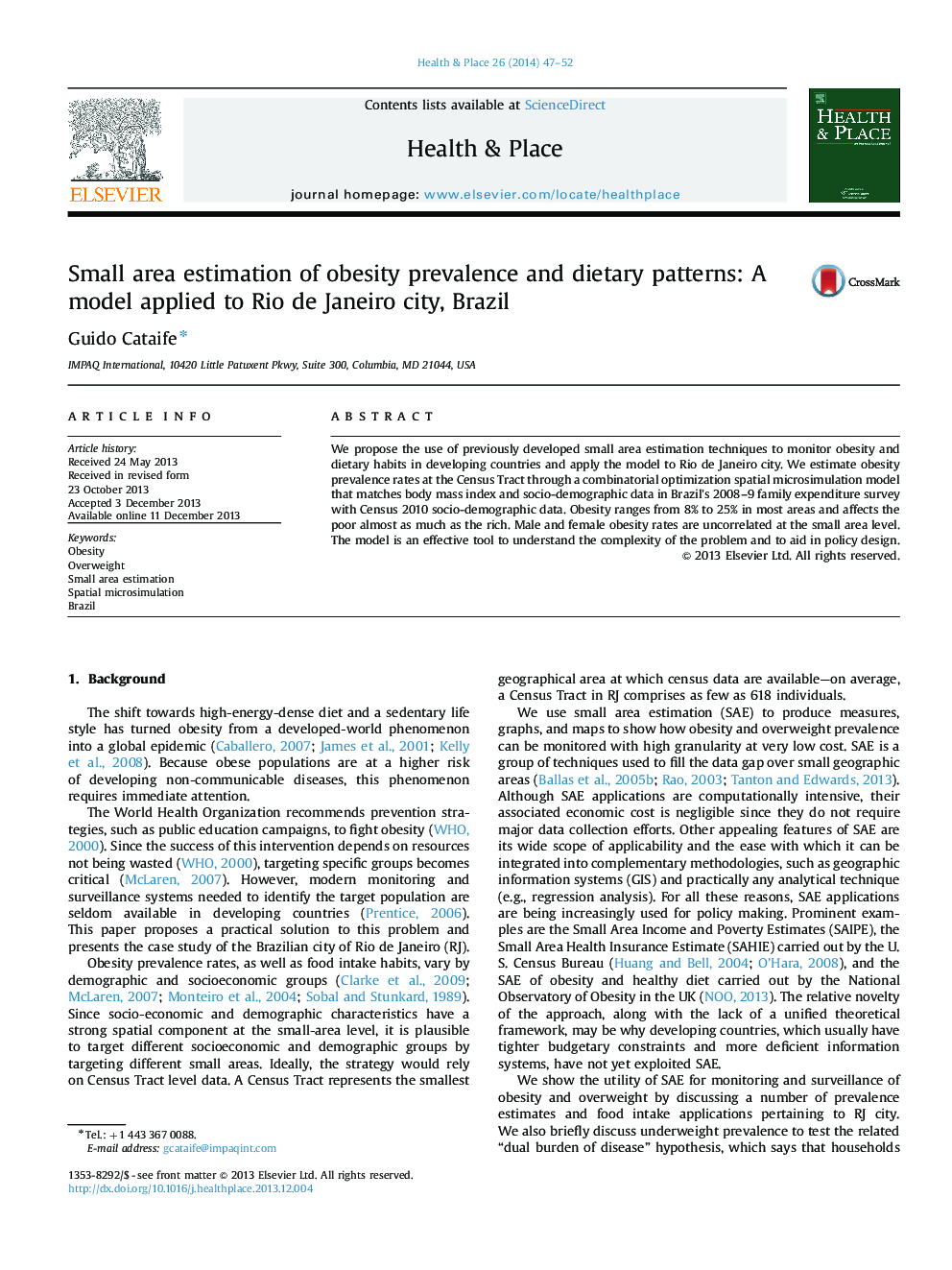| Article ID | Journal | Published Year | Pages | File Type |
|---|---|---|---|---|
| 7458720 | Health & Place | 2014 | 6 Pages |
Abstract
We propose the use of previously developed small area estimation techniques to monitor obesity and dietary habits in developing countries and apply the model to Rio de Janeiro city. We estimate obesity prevalence rates at the Census Tract through a combinatorial optimization spatial microsimulation model that matches body mass index and socio-demographic data in Brazil's 2008-9 family expenditure survey with Census 2010 socio-demographic data. Obesity ranges from 8% to 25% in most areas and affects the poor almost as much as the rich. Male and female obesity rates are uncorrelated at the small area level. The model is an effective tool to understand the complexity of the problem and to aid in policy design.
Related Topics
Health Sciences
Medicine and Dentistry
Public Health and Health Policy
Authors
Guido Cataife,
